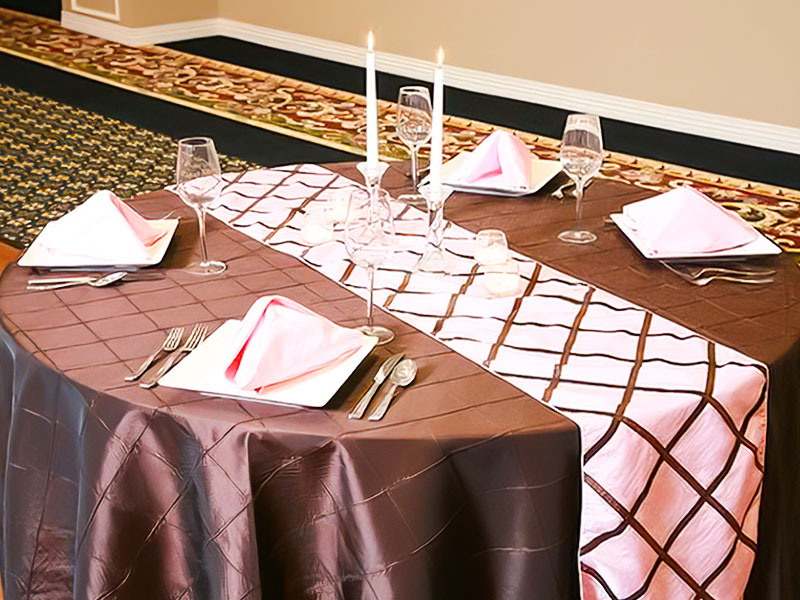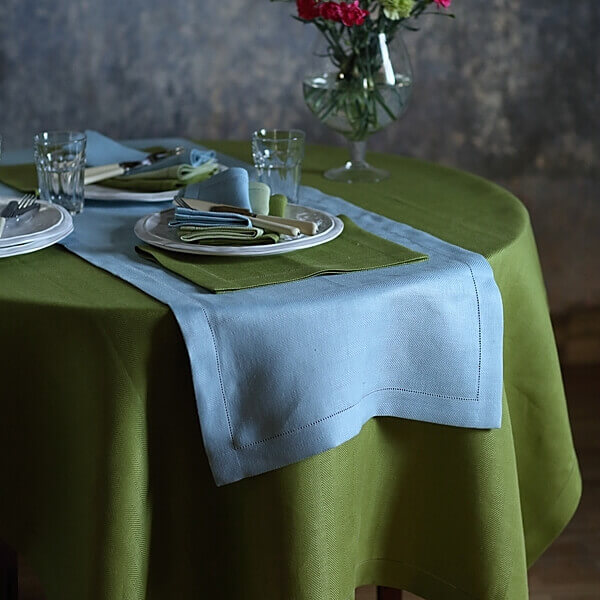Bed Linen Textile Developments: Discovering Modern Trends and Creative Applications in Design and Textile Industry
From lasting manufacturing methods to sophisticated weaving innovations, the evolution of bed linen is reshaping the landscape of the textile market. As we delve right into the realms of imaginative layout applications and the emergence of linen blends and hybrid fabrics, a brand-new chapter unravels in which linen's duty in future textile developments takes facility stage.
Lasting Practices in Linen Production
Lasting techniques in linen production have actually ended up being significantly critical in the textile sector's initiatives to decrease environmental impact and advertise moral sourcing methods. Bed linen, a natural fiber stemmed from the flax plant, uses a variety of advantages such as sturdiness, biodegradability, and breathability. However, conventional techniques of bed linen production can entail considerable water consumption, pesticide usage, and energy-intensive procedures.
To resolve these obstacles, several fabric makers are taking on lasting methods throughout the bed linen production procedure. This includes sourcing flax from organic farms that prevent dangerous pesticides and chemicals, carrying out water-efficient retting strategies to extract fibers from the flax stalks, and using eco-friendly dyes and coatings. In addition, some business are buying renewable resource sources to power their production centers and minimizing waste via recycling and upcycling initiatives.
Technological Innovations in Linen Weaving
With the growing emphasis on sustainable practices in bed linen production, the textile sector is now witnessing a surge in technological developments especially focused on revolutionizing the art of bed linen weaving. These innovations are reshaping the means linen textiles are generated, supplying raised effectiveness, high quality, and creative thinking in weaving techniques.
Among the vital technological advancements in linen weaving is the combination of digital looms. These sophisticated looms are equipped with software program that enables intricate and elaborate styles to be woven with precision. By digitizing the weaving procedure, manufacturers can achieve higher consistency and precision in their bed linen textiles.
Additionally, improvements in thread spinning technology have enabled the manufacturing of finer and more durable linen yarns - table cloths. This results in softer and smoother bed linen fabrics that retain their quality even after numerous uses and laundries
Additionally, the growth of eco-friendly dyeing procedures and finishes for bed linen textiles is acquiring traction. These lasting practices not only reduce the environmental impact however also satisfy the enhancing consumer need for ethically produced fabrics.
Creative Style Applications for Bed Linen
Innovative imaginative techniques are significantly forming the innovative style applications for linen in the textile industry. Linen's natural visual allure and capacity to blend with various other materials make it a favorite choice for creating one-of-a-kind garments and devices that cater to the environmentally aware customer.
Furthermore, developers are trying out bed linen in home design, using its breathable and long lasting nature to craft elegant furnishings such as curtains, bedding, and upholstery. The appearance and drape of linen bring a feeling of elegance and comfort to interior areas, including a touch of beauty to contemporary homes.

Bed Linen Blends and Hybrid Fabrics

Crossbreed fabrics, on the various other hand, take the concept of mixing a step further by integrating added components such as metal strings, recycled products, or conductive fibers. These cutting-edge fabrics not just increase the style possibilities but likewise present functional aspects like conductivity, antimicrobial properties, or boosted durability. Crossbreed materials are progressively being used in numerous sectors, including style, indoor layout, and technological textiles, where the need for multifunctional products is on the increase.
Bed linen's Role in Future Textile Innovations

In the realm of future fabric technologies, bed linen is expected to be a crucial player in the advancement of innovative practical textiles. Developers and researchers are discovering methods to improve linen's intrinsic high qualities via technical improvements, such as imp source integrating smart textiles, nanotechnology, and performance coatings. These technologies aim to boost linen's performance features, making it ideal for a more comprehensive range of applications, from activewear to protective garments.
In addition, the mix of linen with various other all-natural or artificial fibers opens up limitless opportunities for developing unique textiles with unique residential or commercial properties and capabilities. By leveraging bed linen's qualities and discovering cutting-edge blends, the fabric industry is poised to present exciting advancements that deal with evolving consumer requirements and sustainability demands.
Conclusion
To conclude, the expedition of sustainable techniques, technological advancements, innovative design applications, bed linen blends, and its duty in future textile technologies highlight the continual development of linen textile in the modern style and textile market. With a concentrate on technology and imagination, the flexibility and environmentally friendly nature of linen make it a useful material for designers and manufacturers alike, leading the means for further growths and innovations in the area of fabrics.
As we delve right into the realms of innovative design applications and the emergence of bed linen blends and crossbreed fabrics, a new chapter unravels in which linen's duty in future fabric advancements takes center phase.
Checking out the blend of linen with other textiles has actually led to the introduction of cutting-edge blends and hybrid fabrics in the modern fabric industry. Bed linen blends use a special mix of the qualities of bed linen with those of other fibers, resulting in materials that have improved residential properties such as raised resilience, boosted draping, and reduced wrinkling.The development of linen blends and crossbreed fabrics has actually established the phase for Bed linen to play a pivotal duty in driving future fabric innovations.In the world of future fabric advancements, bed linen is expected to be a key gamer in the advancement of innovative functional textiles.